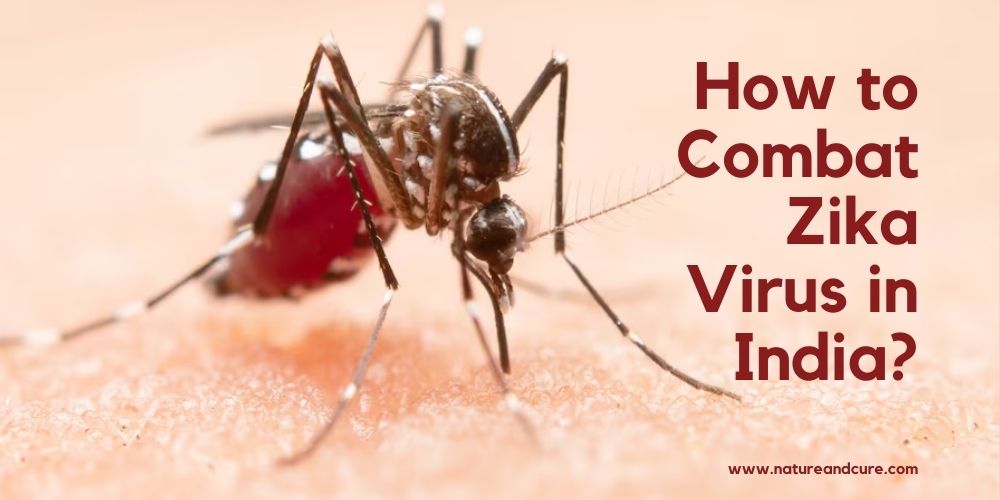
Monsoon rains are back and so are diseases and allergies. India has been witnessing heavy rainfall in many parts of India that has not only brought relief from the scorching heat but also certain challenges. One of the big challenges that most Indian people have started facing is the increasing risk of diseases from mosquito-borne.
Accumulation of stagnant water on streets and homes is leading to an increase in mosquito activity. Further, since the atmosphere is great for these tiny flies to breed, it has amplified the threat of health diseases, including malaria, dengue, chikungunya, and the new Zika Virus.
In this post, we will be highlighting some of the major factors that contribute to these risks, especially the Zika virus transmission that is spreading in many parts of India. Further, we have penned down the implications of this virus on pregnant women.
Puddles and Ditches –These pools of standing water are especially favorable to the Aedes aegypti mosquito, which is known to spread dengue illness. The larvae of Aedes aegypti flourish in moist areas where their mother deposits their eggs. There are more of these hatching locations as the monsoon season goes on, which raises the population of mosquitoes and raises the possibility of dengue fever outbreaks. Thus, preventing the spread of this illness requires removing and managing sources of stagnant water.
Containers – Mosquito larvae can thrive in a variety of containers, such as flowerpots, old tires, and other items that catch rainfall. These objects, which are frequently located in residential areas, have a tendency to retain water when it rains, which makes them the perfect setting for mosquito reproduction. These are ideal circumstances for the Aedes aegypti mosquito, which is responsible for spreading dengue illness. Such containers become persistent breeding grounds since they are often disregarded, which adds to the population growth of mosquitoes. To stop mosquito-borne diseases from spreading, it is crucial to regularly inspect these containers and remove any standing water.
Water Bodies – Overflowing ponds, lakes, and rivers provide more areas for mosquito larvae to breed during the monsoon, which in turn increases the number of mosquitoes. The water from these bodies of water seeps into the surrounding areas, creating stagnant pools that serve as ideal breeding grounds for mosquitoes. Therefore, it is imperative to manage these water bodies and make sure that proper drainage is maintained during the monsoon to prevent mosquito proliferation.
Mosquito activity is generally higher during the monsoon season due to the high humidity levels, which aid in the hatching of mosquito eggs and the development of larvae. This may result in an increase in the mosquito population. Secondly, the constant outdoor gatherings are a great opportunity for these mosquitoes to feed and increase the risk of disease transmission.
Malaria, dengue, chikungunya, and the new Zika Virus all require a bite to transmit the virus into the human body. Especially during their favorable conditions and breeding sites that can cause a big health challenge.
You can’t control the monsoon from coming every year. But, you can surely take some steps to mitigate its impact, such as:
Only a few cases of Zika Virus have been found in India. The condition has not spread widely till now but there are certain factors that may contribute to its rise.
Population – The principal mosquito vectors of the Zika virus, Aedes aegypti, and Aedes albopictus, are found in high quantities in India. The tropical and subtropical environment of the nation is ideal for the growth of these mosquito species, which find plenty of places to nest in sources of stagnant water, like puddles, containers, and bodies of water.
Climate – Another major factor for their growth is India’s tropical climate. The climate is one of the common reasons for the spreading of Zika Virus.
Travel – Zika Virus has not only spread in India but other parts of the country as well. Travelers or people coming from outside countries could introduce this virus to India.
Some of the common signs found in the patients infected with Zika Virus, include Fever, Rash, Joint Pain, Conjunctivitis (red eyes), Headache, and Muscle Pain.
Even if you have been infected by the Zika Virus, diet therapy can be a great cure for your system. Under this therapy, all you need to do is adopt a healthy food-eating habit that will keep your immune system strong. We have listed a few food items that you need to add to your daily diet to combat the zika virus.
The spread of illnesses carried by mosquitoes, including the possible risk of the Zika virus in India, is greatly impacted by monsoon rains. It is essential to comprehend the climatic and environmental elements that affect mosquito activity and reproduction in order to put into practice efficient control strategies. To lessen the effects of these illnesses and protect public health, three crucial elements must be in place: healthcare access, mosquito control, and public awareness. In order to protect public health during the monsoon season and beyond, cooperation between public health authorities, healthcare professionals, and communities will be essential as we continue to monitor and address these issues.
People are constantly complaining about bad air quality in different regions of India. With the…
UNICEF, the World Health Organization (WHO), and partners have been working on the growing concerns…
We have already talked about mud therapy's benefits in constipation, skin health, and weight management.…
The National Library of Medicine has labeled Vitamin D as a "sunshine vitamin" as it…
Constipation is emerging as a common health problem affecting millions of people. The reason behind…
Naturopathy and nutritional medicine are frequently associated in the context of holistic health. They both…